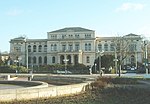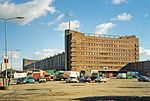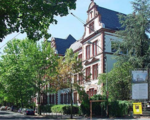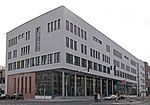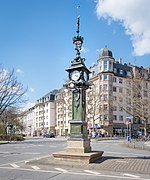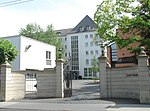Frankfurt (Main) Ost station
Frankfurt U-Bahn stationsRailway stations in FrankfurtRailway stations in Germany opened in 1913

Frankfurt (Main) East station (German: Bahnhof Frankfurt (Main) Ost or Frankfurt Ostbahnhof) serves regional rail services in the Ostend district of Frankfurt, Germany. Its container terminal is one of the two remaining freight yards in the city (the other is Industriepark Höchst), after the much larger Frankfurt central freight yard (Hauptgüterbahnhof) was closed. The freight yard of Frankfurt's eastern river port also lies to the east.
Excerpt from the Wikipedia article Frankfurt (Main) Ost station (License: CC BY-SA 3.0, Authors, Images).Frankfurt (Main) Ost station
Danziger Platz, Frankfurt Ostend (Bornheim/Ostend)
Geographical coordinates (GPS) Address Nearby Places Show on map
Geographical coordinates (GPS)
| Latitude | Longitude |
|---|---|
| N 50.112777777778 ° | E 8.7080555555556 ° |
Address
Danziger Platz 6
60314 Frankfurt, Ostend (Bornheim/Ostend)
Hesse, Germany
Open on Google Maps

